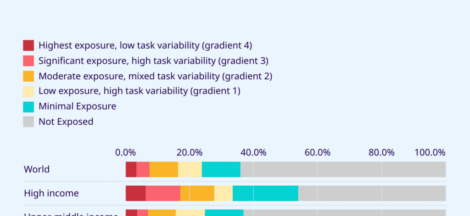By Gyan Pathak
The condition of the jobless people in India was already precarious before the COVID-19 struck the country and lockdown was announced on March 24, 2020. It has been worsening since then. Unemployment rate remains high and prospects of regaining lost jobs or getting new one is low causing deterioration in mental health of the jobless to such an extent that they are committing suicides. Incidents of suicides are more frequently appearing in media indicating that Modi government’s programmes are failing to mitigate the unemployment crisis.
The reports appearing in the media under scaring titles such as – Gurugram Tax Consultant ends life; wife & daughter consume poison; Ujjain: Unemployed engineer kills self; Covid-hit jobless man commits suicide in Surat; Unable to get job, 24-year-old MPSC aspirant dies by suicide in Pune; Youth reportedly commits suicide after losing job – are sufficient to call our attention to the worsening crisis.
We don’t have detailed record of suicides for the year 2020 and 2021, because the National Crime Record Bureau publishes the data of the two years back. We have therefore the latest data of 2019, ie just before the pandemic struck the country. The overall suicides in the country had been rising since 2017, the year when the suicide rate in the country was 9.9 per cent with 1,29,887 suicides. Number of suicides grew to 1,34,516ie 10.2 per cent in 2018, and 1,39,123 ie 10.4 per cent in 2019. During this period unemployment scenario in the country has been worsening. NSSO official data had revealed that India’s unemployment rate stood at 6.1 per cent in 2017-18 at a 45-year high. By April 2019, it increased to 7.6 per cent as per CMIE data. One can therefore suspect that there might be some frightening link between unemployment and suicides.
India’s unemployment rate stood at 23.5 per cent in May 2020. Thereafter, it had been fluctuating on a month on month basis until January 2021. It means that in one month people were getting employed and the next month they ended up losing it. From the beginning of 2021, it has worsened. The unemployment rate in January was 6.52 per cent which rose to 7.97 per cent in April, and 8.2 per cent on May 9, according to CMIE data. In May 2021, the unemployment rate was 11.9 per cent, in June 9.17 per cent, and on July 23 it was 7.26 per cent. Urban unemployment was higher at 8.39 per cent as against the rural unemployment at 6.74 per cent as on July 23.
Now come to the suicidal trend as appearing in media. The reports of suicides are more in from urban areas than the rural India. We also see that unemployment rate on 30 day moving average in urban area is higher than the rural areas. Here, it also must be noted that we have Mahatma Gandhi National Rural Employment Guarantee Act (MNREGA) for the rural population, but we don’t have any such employment guarantee scheme or act for the urban poor. The unemployed in the urban areas are totally at the mercy of the market forces, at a time when COVID-19 lockdowns and the containment measures had completely distorted the labour market situation.
Suicides in India was already on the rise before the pandemic which grew by 3.4 per cent in 2019 as against 2018. The states like Maharashtra, Uttar Pradesh, Madhya Pradesh, Delhi, Tamil Nadu, Karnataka, West Bengal reported large number of suicides even before the pandemic. These states are also known for giving large number of employment due to concentration of industries and business. When the pandemic struck, industries and business disruption were obviously largest in these states causing largest number of job losses. No wonder, largest number of suicide cases are being reported from these states. It’s a matter of serious concern.
Though the figures suggest there is a link between jobs loss and suicides and also deterioration of mental health during the pandemic causing several other tribulations of an individual, only a detailed study can clear the hazy picture we have now. In 2019, of the total suicides, about 2 per cent were reported due to unemployment. Professional and career problem caused 1.2 per cent, poverty caused 0.9 per cent, and indebtedness caused 4.2 per cent of suicides. About 0.4 per cent committed suicides due to fall in social reputation. COVID-19 have pushed much more people under such conditions, and therefore, suicides might have been increased unprecedentedly.
Most of the people committed suicides in 2019 were from the age group 18-45. The people from this age group are most active in the labour market and therefore they are worst hit form the job loss. It has deteriorated their condition, especially women who lost larger share of jobs than men. The reports coming in the newspapers show suicides by both the sexes, the proportion would be known only after detailed report of the government comes out.
If we see at the suicides by profession during 2019, the precariousness of the working class seems to have acquired frightening proportion during the pandemic. Highest number of suicides were committed in 2019 by daily wage earners which were 23.4 per cent of the total suicides, followed by house wives 15.4 per cent, self-employed 11.6 per cent, unemployed 10.1 per cent, professionals and salaried persons 9.1 per cent, farmers and allied activites 7.4 per cent, students 7.4 per cent, and retired persons 0.9 per cent.
By economic status, 66.2 per cent of suicides were committed by persons having income of less than one lakh rupees yearly. Next 29.6 per cent suicide victims were earning between 1-5 laky a year. The pandemic and containment measures has worsened the condition for all such persons, and most of them are not covered under any social security provision. Modi government must awake and do something for the unemployed and launch job guarantee and protection schemes. (IPA Service)




 Even Covid Can’t Curtail Craze For Gold In India
Even Covid Can’t Curtail Craze For Gold In India 